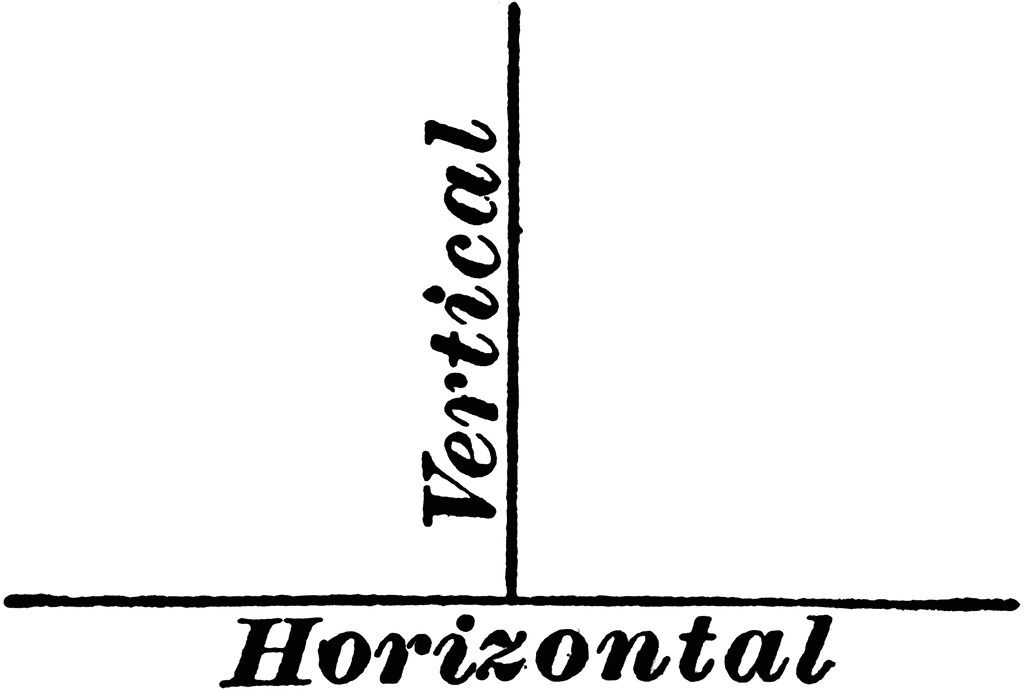Dy/dx is the slope of the tangent line. In this problem the differentiation has already been done, in "implicit" form - that is, both x and y occur in the function. Set the numerator to zero to find where the slope is horizontal, and set the denominator to zero to find vertical tangents.
Knowing only the derivative, you will not be able to specify the actual point - just one of its two coordinates. To the data, we see that there's going to be an infinite number of possibilities. In terms of where the tangent is vertical or horizontal. So with that we want to find work signed data plus cosign Theta equals zero.
So if we just typed in Sin X plus code sign X. That's the case at a lot of these points. Is um any integer and in this case alpha is going to be negative pi over four. So we'll have negative pi over four and then any additional uh value um increasing. And then we'll see that their horizontal when we have uh will be horizontal.
When sine of pi or sine of theta equals coastline data. So that is where we have person X minus syntax equal to zero. So that's going to be negative three power four pi over four. So the horizontal ones or the vertical ones are going to be pi over four plus M. And the horizontal ones will be negative pi over four plus M pie.
Use slope to find the location of horizontal and vertical tangent lines. Using the derivative of a radical function, the presenter finds the points where the derivative is zero or undefined on a given interval. The 26th in a series of 31 videos shows graphically the location of the horizontal and vertical tangent lines to the function.
The resource goes on to interpret the vertical tangent lines in terms of the differentiability of the function. A horizontal tangent line is a mathematical feature on a graph, located where a function's derivative is zero. This is because, by definition, the derivative gives the slope of the tangent line.
Therefore, when the derivative is zero, the tangent line is horizontal. To find horizontal tangent lines, use the derivative of the function to locate the zeros and plug them back into the original equation. Horizontal tangent lines are important in calculus because they indicate local maximum or minimum points in the original function. Determine the \(x\)-\(y\) coordinates of the points where the following parametric equations will have horizontal or vertical tangents. This video explains how to determine the points on a polar curve where there are horizontal and vertical tangent lines.
The next topic that we need to discuss in this section is that of horizontal and vertical tangents. We can easily identify where these will occur (or at least the \(t\)'s that will give them) by looking at the derivative formula. Set the denominator of any fractions to zero. The values at these points correspond to vertical tangents. Plug the point back into the original formula. If the right-hand side differs from the left-hand side, then a vertical tangent is confirmed.
A tangent of a curve is a line that touches the curve at one point. It has the same slope as the curve at that point. A vertical tangent touches the curve at a point where the gradient of the curve is infinite and undefined. On a graph, it runs parallel to the y-axis.
In mathematics, particularly calculus, a vertical tangent is a tangent line that is vertical. Because a vertical line has infinite slope, a function whose graph has a vertical tangent is not differentiable at the point of tangency. Using implicit differentiation find y', so that you have a formula for slopes of tangent lines to the graph of the original function. The study of curves can be performed directly in polar coordinates without transition to the Cartesian system.
Vertical tangent touches the curve at a point where the gradient of the curve is infinite and undefined. The derivative (dy/dx) will give you the gradient of the curve. I am currently working with parametric equation and trying to solve finding points on the curve where the tangent is horizontal or vertical. A horizontal tangent line is a mathematical feature on a graph, located where a function's derivative is zero. The vertical tangent to a curve occurs at a point where the slope is undefined .
This can also be explained in terms of calculus when the derivative at a point is undefined. Terms of a single variable and differentiate that equation with respect to time, remembering that you are actually performing implicit differentiation. If the right side of the formula contains several variables, typically you need to link them somehow. Constants may be plugged in before the differentiation process but variables that are changing may only be plugged in after the differentiation process. Transformations affect functions, derivatives, and tangent lines in predictable ways. For example, a vertical translation has no effect on the derivative, but translates the tangent line the same amount as the function.
On the other hand, a vertical stretch stretches the tangent line in the same way -- this is basically the Constant Multiple Rule. Use a straight edge to verify that the tangent line points straight up and down at that point. Test the point by plugging it into the formula .
If the right-hand side of the equation differs from the left-hand side , then there is a vertical tangent line at that point. Graphing functions in polar coordinates is similar to cartesian coordinates , but uses the radius and angle from the horizontal axis points. Is the graph of the equation a function?
Use the vertical line test to answer this question. The definition states that the vertical line can pass through the graph of the line no more than one time. The teacher demonstrates exactly what... Pupils view an educational video showing how to solve a system of linear equations by graphing. The system consists of a horizontal line and a vertical line, making the solution apparent in the...
When The Tangent Line Is Horizontal The nonlinear graviton construction proceeds from the definition of twistors in flat spacetime as α-planes in complexified Minkowski space. It is natural to ask which complexified metrics admit a full family of α-surfaces, that is, 2-surfaces that are totally null and self-dual. The answer is that a full family of α-surfaces exists iff the conformally invariant part of the curvature tensor, the Weyl tensor, is anti-self-dual. If this is the case, twistor space can be defined to be the (necessarily three-dimensional) space of such α-surfaces.
Vertical tangent lines occur at the points (-4, -1) and (2, -1). No, the curve cannot have a horizontal tangent where it crosses the x-axis. An even vertical asymptote of the derivative indicates vertical tangent line on the graph of the function, but not an extreme value. There's no easier test than the vertical line test. Learners drag a vertical line across the graphs of several relations in an interactive. They answer a set of challenge questions that focus on whether the graphs represent functions.
So I've done max/min problems before, but not this type of curve. I tried deriving and setting it to zero so I could at least find the horizontal tangents, but I realized there were 2 variables so that didn't work. Not really sure how to proceed from here. 4−x2 where the tangent line is either horizontal or vertical. More generally, if x0 is an interior point in the domain of a function f, then f is said to be differentiable at x0 if the derivative f ′ exists. This means that the graph of f has a non-vertical tangent line at the point (x0, f).
2) Plug x value of the indicated point into f ' to find the slope at x. 3) Plug x value into f to find the y coordinate of the tangent point. 4) Combine the slope from step 2 and point from step 3 using the point-slope formula to find the equation for the tangent line. To find the points at which the tangent line is horizontal, we have to find where the slope of the function is 0 because a horizontal line's slope is 0. Now set it equal to 0 and solve for x to find the x values at which the tangent line is horizontal to given function.
2) Plug x value of the indicated point into f ' to find the slope at x. So, why would we want the second derivative? Well, recall from your Calculus I class that with the second derivative we can determine where a curve is concave up and concave down.
We could do the same thing with parametric equations if we wanted to. Some curves will have more than one vertical tangent. Always make sure you have found all the values of x that make the gradient infinite.
You can use graph-plotting software to check by eye for places where the gradient becomes vertical. Browse other questions tagged calculus derivatives implicit-differentiation or ask your own question. To find the points at which the tangent line is horizontal, we have to find where the slope of the function is 0 because a horizontal line's slope is 0. " f x are simultaneously zero, no conclusion can be made about tangent lines. These types of problems go well with implicit differentiation. One-to-one means the answer is simple, right?
Given four graphs, pupils use a vertical line to test each graph to find out if they are one-to-one. By using the resource, learners realize that not all one-to-one relations are functions.... Teachers have been asking pupils this question from the time they started their algebra careers. A helpful video walks through the process of using the vertical line test to determine a function while showing various... The derivative of a function has many applications to problems in calculus. The derivative of a function at a point is the slope of the tangent line at this point.
The normal line is defined as the line that is perpendicular to the tangent line at the point of tangency. A vertical line has undefined slope because all points on the line have the same x-coordinate. As a result the formula used for slope has a denominator of 0, which makes the slope undefined.. Substitute the x x -coordinate of the given point into the derivative to calculate the gradient of the tangent.
Substitute the gradient of the tangent and the coordinates of the given point into an appropriate form of the straight line equation. Vertical cusps exist where the function is defined at some point c, and the function is going to opposite infinities. Vertical tangents are the same as cusps except the function is not defined at the point of the vertical tangent.
Find the points on the curve where the tangent is horizontal or vertical. This is the set of parametric equations that we used in the first example and so we already have the following computations completed. We'll first need the derivatives of the parametric equations. The horizontal asymptote of a rational function can be determined by looking at the degrees of the numerator and denominator.
This method is referred to as eliminating the parameter. To eliminate the parameter, solve one of the parametric equations for the parameter. Then substitute this result for the parameter in the other parametric equation and simplify. Vertical cusps are where the one sided limits of the derivative at a point are infinities of opposite signs. Vertical tangent lines are where the one sided limits of the derivative at a point are infinities of the same sign.
A tangent to a circle is perpendicular to the radius to the point of tangency. The instantaneous rate of change is the slope of the tangent line at a point. A derivative function is a function of the slopes of the original function. The number "zero" exists, so horizontal lines do indeed have a slope.
But vertical lines don't have any slope; "slope" simply doesn't have any meaning for vertical lines. Take your kids on a tour of graphing rational functions. Using this TI lesson, high schoolers identify the end behavior of their functions.
They find the domain and range, describe end behavior, and look at asymptotes and restrictions of... How does the vertical line test help you decide if the graph of an equation is a function? The instructor draws a graph and then draws the line of the equation. She demonstrates how to use the vertical line test to determine if the graph... When the equation of a curve involves both x and y, you need to use what's called implicit differentiation. You must have seen that or the question wouldn't be fair, so go back and review how it works.
























No comments:
Post a Comment
Note: Only a member of this blog may post a comment.